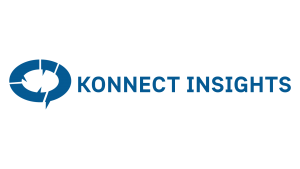In the pharmaceutical industry, marketing teams use several promotional measures to make their products and services available to customers.
In the pharma industry, the customer, i.e., the patient and his family, ideally sit at the top of the chain. As a result, orientation marketing best serves the pharmaceutical manufacturing industry, which involves prioritizing, identifying needs, and promoting products and services between the various companies involved in the supply chain.
In a pharmaceutical system, patients access pharmaceutical care through healthcare professionals (HCPs) from large pharmaceutical companies. This includes suppliers (lab equipment, chemicals, etc.), R&D, discovery, production, and delivery. Thus, marketing plays a crucial role in Business to Consumer (B2C) and Business to Business (B2B) pharmaceutical environments to inform stakeholders of their options.
Marketing In The Pharmaceutical Industry
With the advent of digital technology, pharmaceutical companies are working hard to keep up with the changing landscape. Healthcare is undergoing a transformation similar to that experienced by media, retail, and banking due to mobile communications, the cloud, advanced analytics, and the Internet of Things.
Executives in the pharmaceutical industry understand the disruptive potential of digital technologies and are involved in various experiments. Despite this, many still need to be convinced about what digital achievement will look like five years down the line, making it impossible for them to decide what ventures to expand and how.
Companies seeking to develop a digital success strategy should keep an eye on disruptive trends to see where digital technology will provide the most value. By doing so, they can make more informed decisions about utilizing resources and position themselves for success.
Further, we discuss certain marketing trends in the pharma industry that can help companies stay ahead and provide the best care to their patients.
Consumerization Of Healthcare
Healthcare is a hot topic searched on Google daily. Today, patients play a more active role in their healthcare. Access to information and increasing skepticism are leading to an increase in patient awareness and empowerment.
People also turn to social media to learn about a company’s or healthcare center’s quality and credibility. They also use social media to express their satisfaction with their care or a particular product. With this level of awareness and communication, the healthcare industry has to pay extra attention to meet patient expectations, and brands must focus on the entire customer journey.
Traditionally, pharmaceutical models were centered around products, but now they are centered around customers. This approach improves patient outcomes and experiences. The system also entirely changes how brands and marketers communicate with their audiences.
Marketing professionals must change how drugs are sold, especially in cases where customers need face-to-face interactions to understand prescriptions better. Using dedicated commercial teams for marketing and knowledge sharing within pharmaceutical marketing is now an indispensable requirement.
Moreover, brands will have to rethink their commercial marketing tactics, including starting new customer-centric ways and rethinking how to engage customers and make effective sales decisions.
Adopting Social Media Trends
Many organizations and industries have changed their marketing strategies due to the COVID-19 pandemic. Amidst the chaos, pharma marketers gained stability in 2020. Healthcare professionals (HCPs) have connected with patients with the help of digital technologies. A digital revolution took place in the sector as a result of this. Digital marketing was the key to targeting Healthcare professionals (HCPs) the following year (2021).
Direct-to-consumer marketing (DTC) is a straightforward, mutually beneficial strategy that the pharmaceutical industry has started utilizing recently. Most brands today have a social media presence.
Consumers are already talking about their health and medical experiences on social media. Moreover, even healthcare professionals from various departments have stepped out to share information, bust myths, and inform audiences about new developments. Engaging in these conversations, listening to consumer feedback, and providing consumers with further information and support are beneficial for pharma companies.
Furthermore, social media enhances consumer trust and authenticity by humanizing brands. Healthcare requires brands to establish a high level of trust with consumers so that patients trust their messaging. Pharmaceutical companies must embrace social trends and be active on social media to stay relevant, connect with customers, and build consumer relationships. That’s why we feel brands such as Johnson & Johnson, Johnson’s Baby, and many others are loyal and connected. Johnson & Johnson’s homepage is more of a health-information service than a company page, with product links interspersed with parenting tips, exercise advice, and public health news.
However, this does not mean brands heavily invest in social media growth, ignoring customer experience. One must remember that quality services and marketing must go hand in hand. Additionally, marketing teams must have a solid knowledge of the products and services they promote.
Inbound Marketing and Marketing Automation
Marketing automation aims to make all the necessary routine marketing tasks happen without human intervention. That includes targeting specific behaviors, sending emails, personalizing advertising, and prioritizing leads.
Automation enhances teamwork, provides prospects and customers with more personalized, relevant content, and saves time. By regularly providing relevant content to maintain customer relationships and share knowledge, healthcare brands must prioritize knowledge sharing. Share regular knowledge bites or remind people about regular health checkups and medicines.
Content marketing
The content marketing strategy for pharmaceutical companies often looks similar to inbound marketing strategies. This is because it aims to achieve objectives such as thought leadership and establishing trust that they are there for their customers.
However, a few key differences set content marketing apart from inbound marketing, such as focusing on creating evergreen content to repurpose and a focus on keyword research. In writing content, one can go in two directions: commercial (featured advertisements) and scientific.
To reach existing and new audiences, one can publish the content on various platforms: third-party publications (print and digital), the website, social media, webinars, email campaigns, etc. High-quality content takes good experience, a technical eye, and a thorough understanding of the audience and their need.
There are a thousand words in a picture. Insmed’s Area 23 campaign achieved exactly that. Since NTMs (Nontuberculous Mycobacteria) are difficult to diagnose, the campaign targeted healthcare professionals. Artists from around the world were paired with NTM patients at Insmed to create visual representations of their experience. The goal was to raise awareness about the struggles of people living with NTM. It’s a great example of content marketing’s power.
A Focus On Brand Culture
Nowadays, consumers are more interested in how an organization conducts its internal activities, behaves, and practices. McCrindle reported that 86% of Australians are likelier to engage with an organization that clearly communicates its social impact. Increasingly skeptical consumers require pharmaceutical companies to build trust.
Building a positive brand image and trust with consumers requires a well-rounded, authentic sense of the brand. Defining the brand’s core values, objectives, and goals can help ensure that products and services are satisfying and comfortable for customers. Further, it is essential to communicate brand values to marketers and employees. Furthermore, a focused brand culture can build a positive brand image to attract partners and stakeholders.
The most effective way to get the most out of this trend in 2023 is to ensure that products and services improve people’s lives. This will ensure that the brand has an identity that everyone wants to be a part of.
Changing Work Environments
The pandemic changed how we do business in every industry, including pharma. The pandemic forced us to re-evaluate our work lives and enforce flexibility. This trend continued throughout 2022.
Now agile work cultures are more than essential (and already possible). Companies must understand how this can increase their relevance in a competitive job market. Under long-term pressure and stress, the health and pharmaceutical industries were similarly adversely affected.
In terms of brand and marketing, more and more companies are outsourcing their marketing efforts to experts for specific products or campaigns. Brand ambassadors talk about their experiences at different workplaces and spread the word about the services and products.
A Rise In Digital Healthcare Solutions
The pandemic forced changes in the medical industry, which had been slow to change in the past. A more significant proportion of digital health experiences and solutions are now marketed directly to consumers (DTC). Additionally, digital health services offer many benefits, including affordability and accessibility.
A PWC study found that 77% of clinicians reported that ‘new nontraditional care venues’ have maintained or improved patient health outcomes. With digital healthcare, patients can access trusted information and optimize their treatment outcomes. Consequently, pharmaceutical companies will need to develop more at-home care solutions. Devices and innovative treatment options also open up new avenues of communication with the audience.
For example, the single-use bioreactor is an innovative reactor that is gaining popularity as it reduces downtime and increases productivity. These bioreactors eliminate complex steps like cleaning and validation between production stages. Continuous manufacturing processes and bioreactor systems are emerging to address the increasing focus on biopharmaceuticals. Besides eliminating downtime, continuous manufacturing uses little energy, is highly productive, and minimizes waste.
Another innovative trend is making use of precision medicine. A precision medicine approach treats each patient as an individual based on their unique characteristics. In the era of omic analysis and data analysis, new insights are emerging into how drugs work. Additive manufacturing and new insights make personalized medicine possible. Pharmacokinetic and pharmacodynamic models are used to determine the right drug dosage based on age, sex, comorbidities, and other clinical parameters.
Let us look at the popular digital strategies and trends in the pharma industry:
Data-Driven Insight
There is usually no open access to the data held by pharmaceutical companies due to their different organizational and technical silos. Certain companies’ products, pipelines, and strategies are already improved by linking and leveraging their data sets. However, utilizing internal and external data sources still gives a significant opportunity to extract additional value from data and analytics. A few examples are illustrated below:
It has become common practice to discover molecules using digital methods and test them using advanced modeling and simulation methods in R&D. For instance, we can accelerate product development and assess potential toxicity with computer simulations. The sensor data can be collected in vivo in clinical trials using wearables, which are factored into the value dossiers and registration filings at the end of development. This can give an early indication of real-world effectiveness.
The pharmaceutical industry, along with other healthcare companies, is joining forces to generate real-world evidence about a drug’s efficacy and clinical practices and guide reimbursement through the analysis of data from laboratories, insurance claims, sensors, clinics, and more. In the future, when most care is “protocolized” automated decision algorithms combined with advanced analytics will assist physicians with the most appropriate treatment options.
Marketing Automation and AI
Marketing automation and artificial intelligence in the pharmaceutical industry will effectively solve several healthcare-related problems. The automation of marketing analyzes customer behavior and content consumption across multiple platforms. Using this approach, pharma companies can help their customers stay engaged by personalizing and tailoring content.
A value-driven customer experience can also be delivered through automated chats and email campaigns to enhance management effectiveness.
Agility and Enhancing Efficiency
Businesses in all industries can improve their quality, speed, efficiency, and responsiveness by leveraging sensors, automated decisions, and advanced analytics. This is also true for the pharmaceutical industry. Pharma companies’ business processes will be streamlined in the digital age by Next-Generation Technologies.
Companies must achieve real-time transparency in clinical trial portfolios and frictionless sales and supply chain planning to meet new expectations of agility and efficiency from customers, suppliers, employees, and patients.
Video engagement
Medical video content is a highly effective way of showcasing services, capabilities, results, and practice methods naturally and efficiently. B2B marketing, in general, has been creating more and more video content for about ten years now.
Video content is a great way to capture the audience’s attention and keep them invested in what is said. However, it has recently started seriously impacting B2B pharma marketing. The market is growing for video content, such as explainer videos and product demos, increasing site visits because customers find video content engaging and informative. For demonstrating molecular structures and other complex scientific information, 2D animations have become a relatively simple and cheap option to create.
However, 3D animations require more effort and time to script and produce. Visual demonstrations of product and service offerings, such as real-life footage of manufacturing sites and customer testimonials, are also powerful tools for engaging customers.
Marketing With Personalization
Customer relationship management and one-to-one marketing create an extraordinary customer experience. Technological advances now make it possible for larger organizations to achieve it effectively, even on a larger scale. A personalized brand experience is generally considered good practice, as 80% of people are likely to purchase from such a brand. Pharma marketing, especially, benefits from this because it empowers patients and increases the efficiency of the marketing system.
Omnichannel marketing (personalized) is becoming increasingly popular as healthcare trends shift toward result-based care. Enabling different marketing tactics for physicians, consumers, and payers is the key. In advanced pharma marketing, this personalized marketing involves targeting digital platforms with customized messages for particular segments of consumers who urgently require information.
A big data-driven marketing strategy that targets smaller segments with custom treatment offerings requires an investment in technology. The programmatic advertising industry is also experimenting with such types of marketing, which use machine learning to automate and optimize digital campaigns. Moreover, it can serve ads to selective users as they browse and conduct business online.
Monitoring drug consumption could, for instance, be included in the treatment plan for a Parkinson’s patient. Healthcare professionals can engage patients more effectively if they wear a smartwatch or a specific sensor that monitors their condition. Reminders about appointments and prescribed treatments could also be sent using other technologies (smartwatches are emerging). There is a possibility that such services will improve outcomes and even go beyond the need for expensive specialty drugs. If medication is combined with greater personalization and targeting, the potential for improving patient outcomes is virtually limitless.
Customer insights, targeted segment nurturing, and actionable insights are driven by well-designed data analytics and segmentation strategies, customer journey mapping, and omnichannel marketing.
Multidisciplinary Approach To Healthcare
An integrated approach to health management has evolved within the healthcare system in response to the trend toward integrated health management. Pharma companies are responding to patients’ specific needs with customized, enhanced offerings throughout the value chain.
An integrated patient-centric approach requires the use of healthcare technology. The predictive analytical tools, powered by artificial intelligence and machine learning, could help determine which patients are most likely to require hospital readmission. Alternatively, smartwatches, mobile applications, and wearable sensors could be used to monitor the recovery of patients at home.
Engaging meaningfully with payers, providers, and patients throughout the value chain builds trust and loyalty. This is regardless of which technologies are in use. This will enable healthcare to get miles ahead of pharmaceutical companies that rely on in-person physician visits and sales samples as they did in the past.
Merck & Co., for instance, is one of the largest pharmaceutical companies in the world, ranking #1 on Forbes’ “Best Employers for New Grads”. A great multidisciplinary approach is the reason for its existence. It focuses on developing medicines and vaccines to treat cancer and infectious diseases like HIV and Ebola. Merck’s 68,000 employees work in multiple areas, including manufacturing, research and development, regulatory affairs, and biostatistics. Merck ranked #9 on Fortune’s “20 Best Workplaces in Biotechnology and Pharmaceuticals” due in part to high job satisfaction and a comprehensive benefits package.
Engagement Among Patients Is On The Rise
Nowadays, patients are much less reliant on their doctors for health advice and are becoming more capable and willing to take greater control over their own health. A wide range of health and fitness wearables, such as the Fitbit and Apple Watch, provide them with a wealth of health information, empowering them regarding their health.
In a survey, 85% of respondents felt confident about taking responsibility for their health. In response to the increasing cost of healthcare, patients are increasingly eager to evaluate various healthcare products. Its commercial model could succeed if it can engage patients during their evaluations in the digital age.
Tech competitors
Traditional healthcare establishments are no longer the only source of insights and information about patients’ clinical and historical paths. In the past, patient health information was mainly gathered from paper-based medical records. The pharmaceutical companies kept their research and development data within their walls. Several technology firms are moving into healthcare, including Apple, IBM, and Qualcomm Technologies. Healthcare apps and fitness devices can also engage patients through online communities.
Petabytes (1000000 Gigabytes) of data can be gathered from sources, including insurance claims and electronic medical records, allowing valuable mining insight. Apple’s HealthKit platform recently collaborated with IBM Watson Health, enabling Natural Language Processing (NLP) and advanced analytics for clinical decision support. With the emergence of these upcoming players, pharma companies must decide whether to compete, collaborate, or build complementary capabilities.
Concluding lines
Data-driven systems and automation technologies are crucial for pharma companies to analyze disruptive trends and operate in the market. Through digital transformation and adaptation, pharmaceutical brands must become more visible to customers and clients. Using the appropriate approach and values when marketing online on various channels can lead to the best results.
A combined platform can provide pharma companies with advanced tools for supervisors, customer care agents, and various stakeholders to ensure customers are happy by engaging and delivering the best solutions.
Konnect Insights provides a broad spectrum of marketing solutions to make customer service employees’ lives easier and their customers happier: a single ticket view, queueing, automated assignment, automatic classification, roles, and permissions; a mobile view; automated prompt responses; approvals; maker/checker; and advanced workflow.
As a company, Konnect Insights believes that care is the future of marketing.












